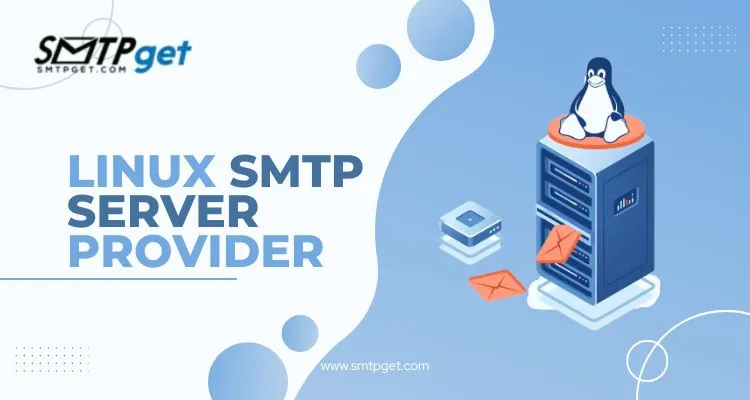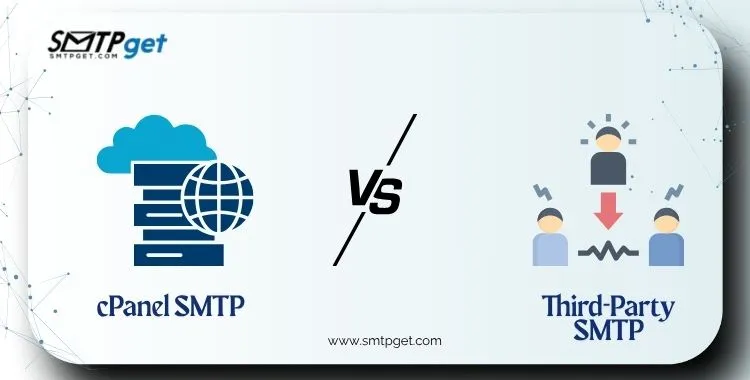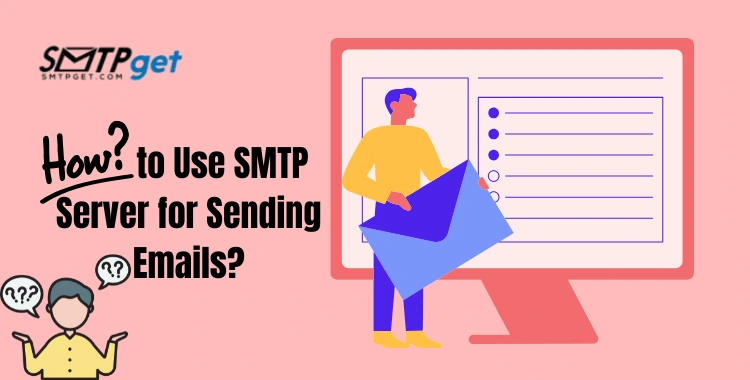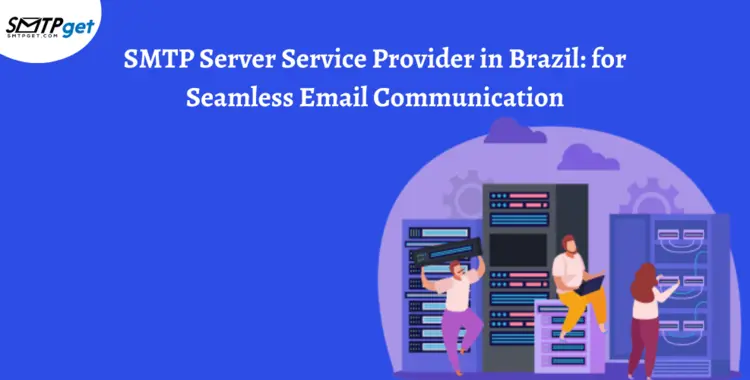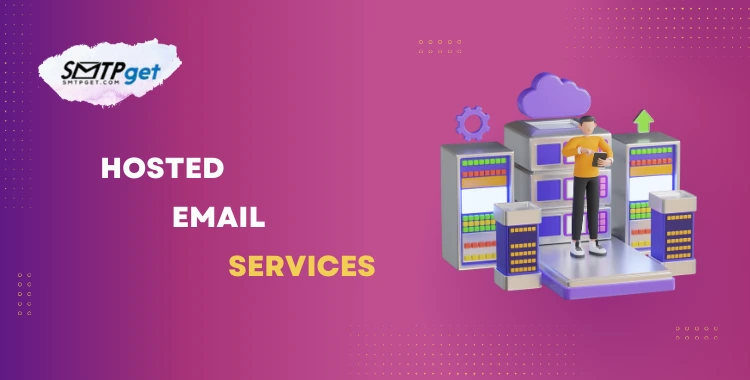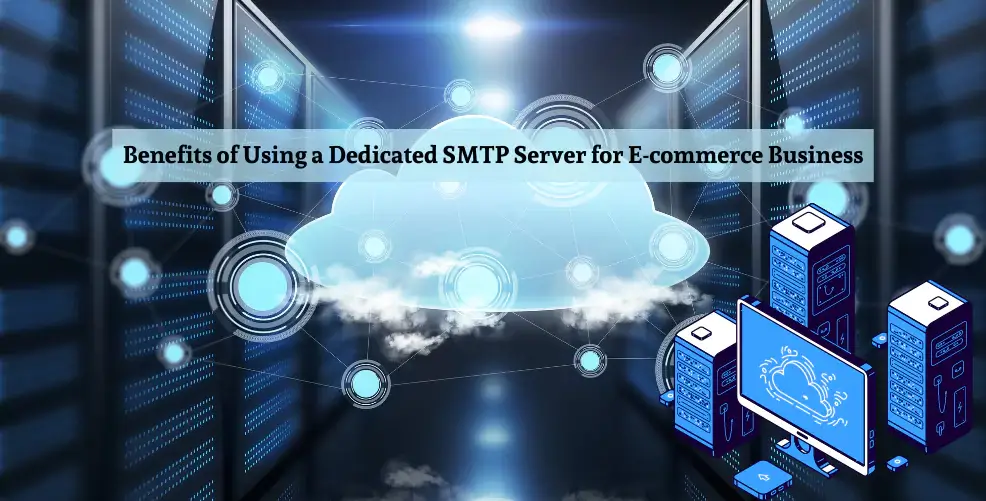Phishing attacks are a big threat to online security, targeting people and businesses by tricking them into revealing personal information or clicking on harmful links. With email being one of the most common ways for attackers to reach their targets, keeping email safe has become essential. SMTP services can help prevent phishing attacks by adding extra layers of security, such as verifying sender identities and filtering out suspicious messages before they reach users’ inboxes.
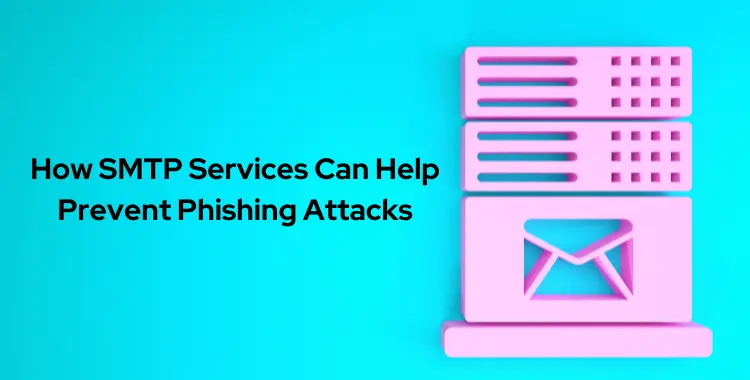
These services also support features like SPF, DKIM, and DMARC, tools designed to keep emails genuine and trustworthy. In this article, we’ll explore how SMTP services work to block phishing attacks, giving businesses and users a safer email experience. Understanding these tools can be a powerful step in building strong defenses against online threats.
Role of SMTP Services in Email Security
SMTP services, or Simple Mail Transfer Protocol, are vital in keeping email communication safe. They are a system used to send emails securely across the Internet. By verifying the sender’s identity and checking for proper credentials, SMTP service helps protect against spam, phishing, and other cyber threats. They act as gatekeepers, ensuring emails are sent only through trusted pathways.
One key feature of SMTP services is encryption, which scrambles email content so only the intended recipient can read it. Additionally, SMTP helps with sender authentication, confirming that emails come from legitimate sources. This makes it harder for cybercriminals to use fake identities to trick recipients. Overall, SMTP services create a safer environment for email by protecting users from unauthorized access and maintaining the integrity of messages. SMTP is essential for secure and trustworthy email communication for both businesses and individuals.
How SMTP Authentication Helps Combat Phishing
SMTP authentication is an important tool in the fight against phishing. Phishing attacks happen when cybercriminals send fake emails pretending to be trusted sources, tricking recipients into giving away sensitive information. SMTP authentication helps stop these attacks by verifying the sender’s identity.
When a sender tries to send an email, SMTP authentication checks if they have permission to use that bulk email server. This process requires the sender to enter a valid username and password, ensuring they’re an authorized user. By requiring this verification, SMTP authentication makes it much harder for attackers to send emails from fake accounts or domains.
This layer of security helps protect businesses and individuals from harmful phishing emails. With SMTP authentication, emails are sent through trusted, verified channels, reducing the risk of phishing and keeping inboxes safer. It’s a simple yet powerful way to keep digital communications secure.
Common SMTP Protocols and Their Security Features
SMTP is the core protocol used to send emails online. Different SMTP protocols have been developed to ensure secure email delivery, each with security features that protect against unauthorized access, interception, and cyber threats. Here’s a quick look at the common SMTP protocols and how they help secure emails:
SMTP over TLS (STARTTLS):
This protocol upgrades a standard SMTP connection to a secure one by using Transport Layer Security (TLS). When enabled, STARTTLS encrypts the data sent from the sender to the recipient’s server, making it difficult for attackers to read or alter the message.
SMTP Authentication (SMTP AUTH):
SMTP AUTH requires users to verify their identity before sending emails. This feature helps prevent spamming and unauthorized use of email servers by ensuring that only authorized users can send messages.
SSL/TLS Encryption (SMTPS):
SMTPS is a secure version of SMTP that uses SSL (Secure Sockets Layer) or TLS encryption from the start of the connection. This protocol is effective for protecting email content from being intercepted or altered during transmission.
DKIM (DomainKeys Identified Mail):
DKIM adds a digital signature to emails, verifying that the message came from an authorized server. This helps prevent phishing attacks by proving that the sender’s identity is legitimate.
Each of these protocols adds a layer of security to email communications, helping organizations protect sensitive information, reduce spam, and build trust in their email systems.
Benefits of Using Secure SMTP Services
Using secure SMTP service has become vital for businesses that rely on email. These services not only help send emails effectively but also add extra layers of security. Here are some key benefits of using secure SMTP services:
- Enhanced Data Protection: Secure SMTP services use encryption to keep your email data safe during transmission. This means sensitive information, like customer details or financial records, remains private.
- Better Spam Control: SMTP servers for Email marketing offer strong filters that help reduce spam and block suspicious emails. With secure SMTP, the chance of spam reaching your inbox is lower, which protects you from phishing scams.
- Improved Authentication: Dedicated SMTP services use authentication methods like DKIM, SPF, and DMARC to verify sender identities. This prevents email spoofing, where hackers pretend to be trusted contacts.
- Higher Email Deliverability: Secure SMTP services improve email deliverability by ensuring your messages follow security standards. This keeps your emails out of spam folders and helps them reach intended recipients.
- Reduced Risk of Data Breaches: Using a secure SMTP server means less risk of data breaches, as emails are protected with strong security protocols. This safeguards both your business data and customer trust.
- Compliance with Regulations: Many industries have strict security regulations. Secure SMTP services help businesses stay compliant by keeping email communications within legal standards.
SMTP vs. Other Email Security Solutions: A Comparison
When it comes to protecting email systems, SMTP is a core tool, but it’s only one part of a larger set of email security solutions. Let’s compare SMTP with other email security options to understand their differences and how they work together. SMTP is the protocol that manages the sending and delivery of emails. It has security features like encryption, which helps protect emails during transit, and authentication to verify the sender’s identity. However, SMTP alone doesn’t fully cover all email security needs, especially as threats grow more advanced.
Other email security solutions, such as DMARC (Domain-based Message Authentication, Reporting, and Conformance), SPF (Sender Policy Framework), and DKIM (DomainKeys Identified Mail), add extra layers of protection. For instance, DMARC works alongside SPF and DKIM to help prevent spoofing and phishing, two common email-based attacks. These tools validate the authenticity of emails by checking if they truly come from a trusted domain.
Specialized email security software or services offer broader protection by scanning for viruses, malware, and suspicious links in emails. These services also use AI-based filters to detect unusual behavior and alert users of potential risks. SMTP is essential for sending emails, but combining it with other security measures—like DMARC, SPF, DKIM, and email security software creates a stronger defense against threats. Together, these tools form a complete email security strategy that helps protect personal and business communications.
Implementing SMTP Services to Protect Against Phishing
Phishing attacks are a major threat to email security, tricking users into sharing sensitive information by pretending to be trusted sources. Implementing SMTP (Simple Mail Transfer Protocol) services can help protect against these risks. SMTP services ensure emails are sent through secure and authenticated pathways, reducing the chances of fake or malicious messages reaching inboxes.
A key feature of SMTP is sender verification, which checks if the email’s origin matches a trusted source. This prevents hackers from posing as reputable contacts. SMTP services also support encryption, making it harder for attackers to intercept or alter emails during transmission. Additionally, they allow for DomainKeys Identified Mail (DKIM) and Sender Policy Framework (SPF) protocols, which add layers of email authentication to further block phishing attempts. Using SMTP services for email security is a proactive way for businesses to guard against phishing and keep communication secure.
Best Practices for Configuring SMTP to Enhance Security
Configuring SMTP properly is important to keep emails secure and protect against cyber threats. Here are some best practices to follow:
- Enable Authentication: Always require users to authenticate before sending emails. This step verifies the sender’s identity and prevents unauthorized access.
- Use Strong Passwords: Set complex passwords for SMTP accounts to reduce the risk of unauthorized access. Passwords should be a mix of letters, numbers, and special characters.
- Enable TLS/SSL Encryption: Use TLS (Transport Layer Security) or SSL (Secure Sockets Layer) encryption to protect emails in transit, making it harder for hackers to intercept and read the message.
- Limit IP Access: Restrict SMTP server access to trusted IP addresses only, reducing the risk of attacks from unknown sources.
- Monitor and Log Activity: Regularly monitor SMTP server logs for suspicious activity. This helps detect and respond to potential threats quickly.
The Importance of SPF, DKIM, and DMARC in SMTP
SPF, DKIM, and DMARC are essential tools in email security, especially for those using SMTP services. SPF (Sender Policy Framework) helps to prevent email spoofing by allowing domain owners to specify which mail servers can send emails on their behalf. This means that if someone tries to send an email pretending to be from your domain, it can be easily identified and blocked.
DKIM (DomainKeys Identified Mail) adds a digital signature to your emails, which verifies that the message was not altered during transit. This helps the recipient trust that the email is genuine.
DMARC (Domain-based Message Authentication, Reporting, and Conformance) builds on SPF and DKIM by providing a way for domain owners to set policies on how to handle unauthenticated emails. With DMARC, you can receive reports about email authentication, helping you monitor and improve your email security.
Together, SPF, DKIM, and DMARC enhance email reliability and protect against fraud.
How to Choose the Right SMTP Service for Your Business
Choosing the right SMTP service for your business is important for secure and reliable email communication. Here are some key factors to consider:
- Reliability: Look for a service with a strong uptime record. You want your emails to reach their destination without delays.
- Security Features: Ensure the service offers encryption and authentication options to protect your data from cyber threats.
- Scalability: Choose a service that can grow with your business. It should handle increased email volume as your company expands.
- Support: Good customer support is essential. Check if they offer 24/7 assistance to help you with any issues.
- Pricing: Compare pricing plans to find one that fits your budget. Be aware of any additional costs for features.
- User Reviews: Read reviews and testimonials from other users to gauge their experiences.
Monitoring and Reporting: Keeping Track of Phishing Attempts
Monitoring and reporting phishing attempts is crucial for protecting personal and business information. Phishing is when cybercriminals trick users into revealing sensitive data, like passwords or credit card numbers, often through fake emails or websites. To keep track of these attempts, organizations should implement effective monitoring systems that can identify suspicious activities.
Using email filters can help catch phishing emails before they reach users. Training employees to recognize the signs of phishing, such as misspelled words or strange links, is also essential. When a phishing attempt is detected, it should be reported immediately to IT teams or security software.
Regularly reviewing security logs and reports helps organizations spot patterns in phishing attempts, allowing them to strengthen defenses. By staying vigilant and informed, both individuals and businesses can significantly reduce the risk of falling victim to phishing attacks, keeping their information and systems secure.
The Future of SMTP Services in Email Security
The future of SMTP services in email security looks promising as technology evolves and cyber threats become more sophisticated. SMTP services will likely adopt advanced security measures to keep emails safe. One significant trend is the increased use of encryption. This means that emails will be coded, making it harder for hackers to access sensitive information.
Moreover, artificial intelligence (AI) will play a vital role in enhancing email security. AI can analyze email patterns, detect suspicious activities, and block potential threats before they reach users’ inboxes. Additionally, we may see improved authentication methods, such as multi-factor authentication, which adds extra layers of security.
As businesses and individuals rely more on email communication, the importance of secure SMTP services will only grow. Staying ahead of cyber threats will require continuous innovation in SMTP technologies, ensuring that email remains a safe and reliable method of communication for everyone.
Common Misconceptions About SMTP and Phishing Prevention
Many people have misconceptions about SMTP (Simple Mail Transfer Protocol) and its role in preventing phishing attacks. One common myth is that SMTP alone can stop phishing. While it is essential for sending emails, it doesn’t have built-in security features to protect against phishing.
Another misconception is that all emails sent through SMTP are safe. In reality, phishing emails can still be sent using SMTP if proper security measures, like authentication and encryption, are not in place.
Some also believe that using SMTP guarantees email delivery. However, if an email looks suspicious or is flagged as spam, it may not reach its destination.
Lastly, many think that phishing is only a problem for large organizations. In truth, anyone can be a target, so awareness and training are crucial. Understanding these misconceptions can help individuals and businesses better protect themselves against phishing threats.
FAQs About SMTP Services and Phishing Protection
Here are five frequently asked questions (FAQs) about SMTP services and phishing protection:
1. What is SMTP, and how does it relate to email security?
Ans. SMTP stands for Simple Mail Transfer Protocol. It is a protocol used for sending emails. While SMTP helps deliver emails, it does not inherently protect against phishing attacks. Security features must be implemented alongside SMTP to enhance email safety.
2. Can SMTP services prevent phishing attacks?
Ans. No, SMTP services alone cannot prevent phishing attacks. However, when combined with security measures like email authentication (SPF, DKIM, DMARC) and encryption, they can significantly reduce the risk of phishing.
3. What are SPF, DKIM, and DMARC?
Ans. SPF (Sender Policy Framework), DKIM (DomainKeys Identified Mail), and DMARC (Domain-based Message Authentication, Reporting & Conformance) are authentication methods that help verify the sender’s identity. They work together to reduce the chances of phishing by ensuring that emails come from legitimate sources.
4. How can I enhance email security using SMTP services?
Ans. To enhance email security, use an SMTP service that supports security features like encryption, authentication, and spam filtering. Regularly update your email protocols and educate users about recognizing phishing attempts.
5. Is phishing a concern only for large organizations?
Ans. No, phishing can target anyone, regardless of the organization’s size. Individuals, small businesses, and large corporations can all fall victim to phishing attacks. Awareness and preventive measures are essential for everyone.
